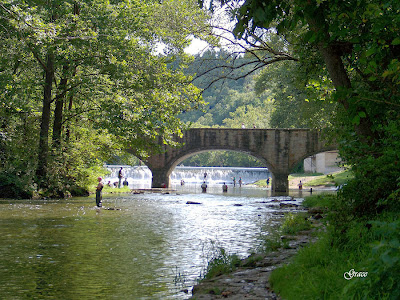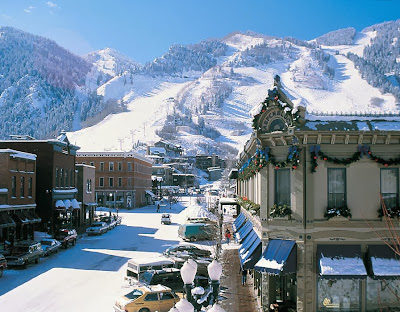Hello!
I haven't posted anything on this blog in a while because it was a school assignment. If you like my writing, please follow my blog Maggie in the Moon, about fashion, personal style, DIY, trends, pop culture, music, and more. :) : Maggieinthemoon.com
San Francisco; GEOG 321 Webpage Assignment
Chapter 20; Hawaii
Hawaii
Both San Francisco and Hawaii have unique aquatic environments that are attractive to countless visitors. Like Hawaii, San Francisco boasts a huge tourist industry. Both areas have crucial watersheds that are home to diverse ecosystems. Hawaii however, has a tropical temperature, while San Francisco's climate is characterized by fog and more precipitation. Hawaii also produces many more agricultural products than San Francisco.
Both San Francisco and Hawaii have unique aquatic environments that are attractive to countless visitors. Like Hawaii, San Francisco boasts a huge tourist industry. Both areas have crucial watersheds that are home to diverse ecosystems. Hawaii however, has a tropical temperature, while San Francisco's climate is characterized by fog and more precipitation. Hawaii also produces many more agricultural products than San Francisco.
Hawaii's very attractive coastline (endtimeheadlines.wordpress.com)
Hawaii is home to a diverse array of ecosystems and animals, such as the sea turtle (en.wikipedia.org)
History's Effects on Demography
About 1,500 years ago, Polynesians migrated from the Marquesas islands in the South Pacific to Hawaii in canoes. Tahitian immigrants arrived about 500 years ago entered the islands. Since the islands were geographically isolated by the sea, a unique culture, religion, and traditions emerged. A complex political hierarchy was formed, and a civilization flourished. Artistic endeavors and crafts were central to Hawaiian culture. Kapa making, feather work, and hula were important. The kapu system was the framework of Hawaiian society. Captain James Cook arrived on the islands in 1778, and was among the first Euro-Americans to witness the unique Polynesian culture that existed. Destruction, disease, and death unfortunately ensued after his arrival. Kamehameha took control of the islands during this time by utilizing western techniques to oppress his own people. Kamehameha's son then took over as the new ruler and broke the kapu. At the same time, Protestant missionaries arrived on the island. Members of missionary families recorded the oral language and translated into a written language. Their impact on Hawaiian society was permanent, and many of their descendants are prominent members of Hawaiian society today. The end of the kapu eventually lead to the demise of the old pattern of Hawaiian society and government and was replaced with kingdom into the 19th century. Hawaii's last queen, Lili`uokalani left the throne willingly to avoid bloodshed. Those who were for the annexation of Hawaii to the United States established the Republic of Hawai`i with a
government that was patterned after that of the United States that still exists today.
Polynesian voyaging units (pvs.kcc.hawaii.edu)
Polynesian voyagers, the first inhabitants of the Hawaiian islands. (en.wikipedia.org)
Amazing undisturbed beauty of Hawaiian islands (www.photoseek.com)
Kamehameha (sun-nation.org)
Last Hawaiian Queen, Liliuokalani (constitutioncenter.org)
Climate & Geography
The Hawaiian islands receive most precipitation during the winter months, like San Francisco. The climate is much drier from May to September. Temperatures at sea level generally range from highs of 85–90 °F during the summer months AND 79–83 °F during the winter months. There are very small amounts of vacations in annual temperature range, unlike in San Francisco. The trade winds on the Hawaiian islands are very steady, while island pattern winds are diverse. Violent winds occur on occasion. Light showers are frequent, which nourish the abundant vegetation. San Francisco also has an abundant amount of plant life, though in its case, most plants are of the mediterranean type.
Tourism
Tourism is a gigantic booming business in Hawaii. Though the summer months and holiday are the most popular times for travel to Hawaii, it occurs steadily throughout the entire year. About 7.6 million visitors visit the island each year, most seeking to escape cold temperatures elsewhere. Historical sites, the natural beauty, aquatic sports such as surfing, and the friendly nature of Hawaiians are principal attractive qualities that boost tourism. Like it, San Francisco has a large amount of tourism year round.
Hawaiian Music
Israel Kamakawiwoʻole's "Somewhere Over the Rainbow"
Chapter 19; California
California
As San Francisco's home, California has much in common with the city in terms of culture, geography, climate, economy, and sustainability. The city that is perhaps most like it is Los Angeles. Both Los Angeles and San Francisco are centers of industry and commerce; Los Angeles is known as a center of the garment industry and fashion industry, while San Francisco is most known as a financial center. California has many of the geographic qualities of San Francisco, though San Francisco is unique in its climate. The Coachella and Imperial Valleys of California produce much more agriculture compared to San Francisco. Both San Francisco and California as a whole are among the most ethnically diverse areas of the United States, with Hispanics being the largest immigrant group. San Francisco's history is inextricably tied to California's.
As San Francisco's home, California has much in common with the city in terms of culture, geography, climate, economy, and sustainability. The city that is perhaps most like it is Los Angeles. Both Los Angeles and San Francisco are centers of industry and commerce; Los Angeles is known as a center of the garment industry and fashion industry, while San Francisco is most known as a financial center. California has many of the geographic qualities of San Francisco, though San Francisco is unique in its climate. The Coachella and Imperial Valleys of California produce much more agriculture compared to San Francisco. Both San Francisco and California as a whole are among the most ethnically diverse areas of the United States, with Hispanics being the largest immigrant group. San Francisco's history is inextricably tied to California's.
California's Flag (www.statesymbolsusa.org)
California's coastal beauty (wallpaper vacations.com)
A tribute to Huell Howser, host of California's Gold, who magnified California's beauty with his unique character and charisma.
Chapter 17; Pacific Northwest
Pacific Northwest
The Pacific Northwest is a neighbor of San Francisco and has many of the same topographic, geographic, and climatic qualities. For this post, I will focus on their similarities.
Geography & Climate
Both the Pacific Northwest and San Francisco have watersheds that shape the geography, climate, economy, and cultural characteristics of both areas. The Pacific Northwest is connected to water much like San Francisco is. The region is circumscribed by the Pacific Ocean to the west. San Francisco is perhaps more surrounded by water than the Pacific Northwest. To the East of the Pacific Northwest, there is the Rocky Mountains. The regions climate and temperature ranges very affected by the many mountain ranges including: Coast Mountains, the Cascade Range, the Olympic Mountains, and the Columbia Mountains. Like the region, San Francisco is also directly affected by mountain ranges: Berkeley Hills, San Leandro Hills,Marin County's Mount Tamalpais, and The Diablo Range (Contra Costa County's Mount Diablo &Alameda County's Mission Peak, Santa Clara County's Mount Hamilton). The climate of the Pacific Northwest is an oceanic marine coast climate between mountain ranges and in coastal areas, much like in San Francisco. An alpine climate exists in the highest mountain ranges. Some areas of the Pacific Northwest are Mediterranean climate, like much of San Francisco.
Sustainability
Both areas are forward seeking and progressive in terms of their environmental outlook. Both Seattle and San Francisco have drafted detailed and effective plans for sustainability.
Here is a link to Sustainable Seattle, Seattle's sustainability: http://sustainableseattle.org
Here is a link to Sustainable City, San Francisco's website:
http://www.sustainable-city.org & San Francisco environment: http://www.sfenvironment.org
Sustainable Transportation
The Pacific Northwest is a neighbor of San Francisco and has many of the same topographic, geographic, and climatic qualities. For this post, I will focus on their similarities.
Pacific Northwestern landscape (www.wlsfa.org )
Puget Sound Islands (www.wlsfa.org )
Geography & Climate
Both the Pacific Northwest and San Francisco have watersheds that shape the geography, climate, economy, and cultural characteristics of both areas. The Pacific Northwest is connected to water much like San Francisco is. The region is circumscribed by the Pacific Ocean to the west. San Francisco is perhaps more surrounded by water than the Pacific Northwest. To the East of the Pacific Northwest, there is the Rocky Mountains. The regions climate and temperature ranges very affected by the many mountain ranges including: Coast Mountains, the Cascade Range, the Olympic Mountains, and the Columbia Mountains. Like the region, San Francisco is also directly affected by mountain ranges: Berkeley Hills, San Leandro Hills,Marin County's Mount Tamalpais, and The Diablo Range (Contra Costa County's Mount Diablo &Alameda County's Mission Peak, Santa Clara County's Mount Hamilton). The climate of the Pacific Northwest is an oceanic marine coast climate between mountain ranges and in coastal areas, much like in San Francisco. An alpine climate exists in the highest mountain ranges. Some areas of the Pacific Northwest are Mediterranean climate, like much of San Francisco.
Mt. Rainier in the Pacific Northwest (americandrivingvacations.com)
San Francisco Peaks (en.wikipedia.org )
Sustainability
Both areas are forward seeking and progressive in terms of their environmental outlook. Both Seattle and San Francisco have drafted detailed and effective plans for sustainability.
Here is a link to Sustainable Seattle, Seattle's sustainability: http://sustainableseattle.org
Here is a link to Sustainable City, San Francisco's website:
http://www.sustainable-city.org & San Francisco environment: http://www.sfenvironment.org
Sustainable Seattle has encouraged residents to beautify their homes while improving the air quality of their city. (http://www.sustainable-city.org)
Like Seattle, San Francisco has encouraged its residents to seek green alternatives to seek means of living a greener lifestyle, and here, sfenvirnonment.org suggests modes of using renewable energy: http://www.sfenvironment.org/energy/energy-efficiency/home
Both regions are encouraging sustainable business.
Sustainable Transportation
Northwestern Seattle's Efficient Transportation System
San Francisco's Efficient Transportation System
Chapter 12; The Ozarks
The Ozarks vs. San Francisco
Though the Ozarks are often stereotyped as being a region of "hillbilly" culture, which is backwards, conservative, and outmoded, the region has emerged as a center of commerce, with two of the most successful companies in the United States, Tyson and Walmart, and tourist town, Branson. Though the pace and overlying cultural values differ greatly from those of San Francisco, both regions share economic success and bountiful tourist attractions.
Big Spring, Missouri- Pristine beauty of The Ozarks (en.wikipedia.org)
(fineartamerica.com)
History's Effects on Demography & Settlement
The Native Americans of the region occupied the area from 100 BCE-900 CE. The Sioux Nation Osage Tribe inhabited the area between the Missouri and Arkansas rivers.
Congressional Gold Medal awarded November 20th, 2013 in honor of Sioux Osage Native American "Code Talkers", who assisted soldiers during WWI and WWII.
Euro-American settlers who entered the region in the nineteenth century were mainly Scots-Irish and Germans. Since the Appalachian region was heavily populated, some Scots-Irish fled to the Ozark Plateau, and subsisted from a self-sufficient lifestyle. Germans immigrated to the United States from 1850-1880, and settled in Kentucky, moving west and into the northern Missouri bottomlands and the Mississippi river floodplains. They were farmers, and purchased land from other farmers. Hillbilly culture is native to the region, and characterized by political conservatism, self sufficiency, maintenance of tradition, hunting and fishing, suspicion of outsiders, and country music. Country music "…evolved from Celtic and English folk songs…" (Mayda, 292) Protestant Christian religion plays a great role in the culture of the region, and it is often called the "Buckle of the Bible Belt" for this reason.
Climate & Geography
The karst topography of the region has indented the landscape with caves, sinkholes, and water that discharges from springs and rocks. Plains surround the hills, which are lower than mountains. The Ozark Plateau is characterized by steep limestone hills. Here, the Lead Belt hosts iron ores, zinc, and other minerals. Geothermal Springs are a natural resource that could be utilized for sustainable energy, but this has not yet happened efficiently. Climate change will likely affect the region greatly, with pines replacing oak/hickory forests, forests retreating and being replaced by grasslands, and vines choking trees due to rising carbon dioxide levels. The temperature ranges of the region create four easily identifiable seasons, with an average of 80 degrees in the summer, and 34 degrees in the winter. These seasons are more severe than in San Francisco, as temperatures hardly ever go below 30 degrees during winter in San Francisco.
Winter in The Ozarks (www.dorothymhauser.com)
(www.blackburnsresort.com)
Economy
Agriculture is a large faction of the region's economy, albeit under modernized conditions. Industrial giant Tyson, essentially recovered the Ozark's agricultural economy. Tyson's methods of growing chickens are intensive, and often criticized for their compromised ethical implications. Seven thousand contract farmers provide land and labor, while the corporation controls the chickens, the feed mills, the hatcheries, and transportation. The chicken whole industry is thus contract farmed. The unintended consequences the chicken growing industry has caused is nutrient overload in soil and groundwater, carcinogenic materials in manure dust, antibiotic resistance, and contamination from CAFO surface water. The New Lead Belt consists of lead, zinc, and copper production, though the toxicity levels have caused lifelong learning and behavioral disabilities in children. The world's largest retail company, Wal-Mart, was birthed in the region, and has an annual sales amount of $300 billion. Though the company has acknowledged the need for energy-efficient procedures, it is lacking in social and environmental responsibilities. Unlike the region, San Francisco is not reliant on agricultural or retail industry.
Chapter 15; The Rocky Mountains
The Rocky Mountains
The Rocky Mountains are characterized by the awe inspiring and majestic beauty that has been the muse for songs, poets, and any American that has taken in the landscape. The Rockies affect the weather and climatic patterns of the region, the flow of water, population booms and busts, and the meeting of multiple agendas such as that of farmers, archers, environmentalists, and politicians that are often discordant.
The Rocky Mountains are characterized by the awe inspiring and majestic beauty that has been the muse for songs, poets, and any American that has taken in the landscape. The Rockies affect the weather and climatic patterns of the region, the flow of water, population booms and busts, and the meeting of multiple agendas such as that of farmers, archers, environmentalists, and politicians that are often discordant.
The beautiful Rocky Mountains (www.austinlehman.com)
(www.bestourism.com)
History's Effects on Demography & Settlement
Native Americans did not inhabit the region in great amounts. Instead, the region was used for hunting and trading of beaver pelts between Euro-Americans and Native Americans in the seventeenth century. Euro Americans. Britain's Hudson Bay Company infiltrated the region during the nineteenth century and practiced fur trapping. They succeeded for a large amount of time in keeping Americans from the spoils and very lucrative resources of the region. French Canadian American trappers then explored the region and founded American fur trapping companies. Trappers discovered interesting and unique geographical characteristics of the region including: holes, rivers, and springs. Many towns experienced booms and busts.
Climate & Geography
There is a huge disparity in temperatures between the Rocky Mountains and the Great Plains of around 35 degrees. This can be attributed to the steep increases in elevation. In the low ranges of the Rocky Mountains, there are desertlike plants and animals, while in the highest elevations there is tundra forest. In the summer, the climate is warm and dry, and in the winter, it is wet and cold. The winters bring much precipitation, and due to it, snow to the region. Unlike it, San Francisco, hardly ever experiences snow, and the levels of precipitation are much lower. Though San Francisco also has vast mountain ranges, its mountains are much lower on average, and do not account for as much tourism as the Rocky Mountain's which attract tourists seeking snow-related recreational activities.
Economy & Sustainability Implications
The Rocky Mountains have a long history of mining that has left the area with abandoned mines, chemicals that pollute the watersheds, displaced habitats, ravaged natural land, and damaged ecosystems. Since the Mining Law of 1872 legalized mining of the area by private companies, few limits were placed, and the resources were exploited. Tourism is a huge contributor to the economy of the Rocky Mountains, due to the scenic beauty of the area, and the availability of snow for skiing, and other snow related activities. Though the region has prospered greatly due to tourism, it is necessary that the social and environmental implications caused by the industry be taken into account. Like in San Francisco, similar environmentally conscious efforts have been made by Vail and Aspen. However, the competition between Vail and Aspen is due to which town is the most greenest, while San Francisco has initiated efforts that are not only green but conducive to long-term sustainable change.
Skiers in Aspen, Colorado (www.cntraveler.com)
Ski Resort (www.invillas.com)
Chapter 16; Intermontane
Intermontane
The Intermontane region has been called a ghost region because it is the driest area of the United States, and has not offered much incentive for migration to the area traditionally. However, due to air-conditioning and the commodities of modern life, this are has now attracted many for its warm and steady climate. In fact, it is now reaching its limit in terms of a sustainable population growth, and must contend with the implications of increased water and energy use. The region could gain many advantages from taking cues of another sunny city, San Francisco.
History's Effects on Demography & Settlement
The Intermontane region has been called a ghost region because it is the driest area of the United States, and has not offered much incentive for migration to the area traditionally. However, due to air-conditioning and the commodities of modern life, this are has now attracted many for its warm and steady climate. In fact, it is now reaching its limit in terms of a sustainable population growth, and must contend with the implications of increased water and energy use. The region could gain many advantages from taking cues of another sunny city, San Francisco.
The Intermontane topography (www.bizjournals.com)
A sun-belt city (www.bizjournals.com)
The Native American tribes of the region were the first group to inhabit the region, and have generally lived in the region beyond the epochs of Mormon and Euro-American settlement. Most of the Native Americans of the region, and 13% of the nation's Native American population now live in the Four Corners of the southwestern Basin and Range. The Navajo, Apache, Jicarilla Apache, Hopi, and Mountain Utes are all native to the region. Spanish culture introduced by explorers and religious missionaries has vastly impacted the landscape, culture, architecture, and history of the region, as it has in San Francisco. The Law of the Indies plaza-style city pattern is present in both the Intermontane region and in San Francisco. Ranching and raising of livestock was much more successful in the Intermontane region than in San Francisco however, and thus cowboy culture emerged here. Mormon culture also affected the region, as leader Brigham Young, who took over after Joseph Smith died, lead his followers into the region. Their towns are modeled after their most thriving city, Salt Lake City, and they have aligned their religion with Christian beliefs, though Joseph Smith added several texts. They believe that their homes are literally the Zion that God promised the Israelites in The Bible.
Adobe style architecture in Santa Fe, New Mexico (en.wikipedia.org)
Catholic Religious influence in Intermontane region (www.travelingboy.com)
Downtown Salt Lake City, Utah (en.wikipedia.org)
Climate & Geography
The region can be defined by a general lack of precipitation, which makes for dry, arid soils, a hot climate, and sparse vegetation. The Colorado Plateau averages 15 inches annually. The highest plateaus receive some snow during the winter. Haboobs, which are dangerous dust storms occurr in the Sonoran desert due to the aridity and lack of precipitation, though these storms may indicate imminent monsoon rains. Unlike the Intermontane, San Francisco has more rain, generally never has snow, and agriculture is slightly more successful here.
Economy
The region has historically been dependent on ranching, and only a small portion of the land has been used for agriculture to the lack of precipitation. It is currently dependent on irrigation for the agriculture that goes on in the fertile Palouse region, and in the Coachella and Imperial Valleys.The desert valleys would be devoid of crops were it not for the irrigation from the Colorado River. Overgrazing due presents a huge obstacle for the ranching industry that will need to be approached in a holistic manner if the industry is to survive. Coal mining is abundant, but its mining has caused air and water pollution. Uranium mining has caused nuclear accidents and poses the threat of nuclear radioactivity. Renewable energy is available however, in the form of geothermal, wind, and solar power. Due to the lack of public and governmental support, the region is abusing its natural resources and taking those of other regions as well. The example set by forward seeking San Francisco for sustainability would be a huge improvement if adopted by the Intermontane region. Multi-purpose land use and renewable energy are its most viable solutions at the time.
The region can be defined by a general lack of precipitation, which makes for dry, arid soils, a hot climate, and sparse vegetation. The Colorado Plateau averages 15 inches annually. The highest plateaus receive some snow during the winter. Haboobs, which are dangerous dust storms occurr in the Sonoran desert due to the aridity and lack of precipitation, though these storms may indicate imminent monsoon rains. Unlike the Intermontane, San Francisco has more rain, generally never has snow, and agriculture is slightly more successful here.
Sonoran Desert at Sunset (planet-wild.com)
Economy
The region has historically been dependent on ranching, and only a small portion of the land has been used for agriculture to the lack of precipitation. It is currently dependent on irrigation for the agriculture that goes on in the fertile Palouse region, and in the Coachella and Imperial Valleys.The desert valleys would be devoid of crops were it not for the irrigation from the Colorado River. Overgrazing due presents a huge obstacle for the ranching industry that will need to be approached in a holistic manner if the industry is to survive. Coal mining is abundant, but its mining has caused air and water pollution. Uranium mining has caused nuclear accidents and poses the threat of nuclear radioactivity. Renewable energy is available however, in the form of geothermal, wind, and solar power. Due to the lack of public and governmental support, the region is abusing its natural resources and taking those of other regions as well. The example set by forward seeking San Francisco for sustainability would be a huge improvement if adopted by the Intermontane region. Multi-purpose land use and renewable energy are its most viable solutions at the time.
Southern Coachella Valley agriculture (geology.campus.ad.csulb.edu)
Subscribe to:
Comments (Atom)

























.jpg)





